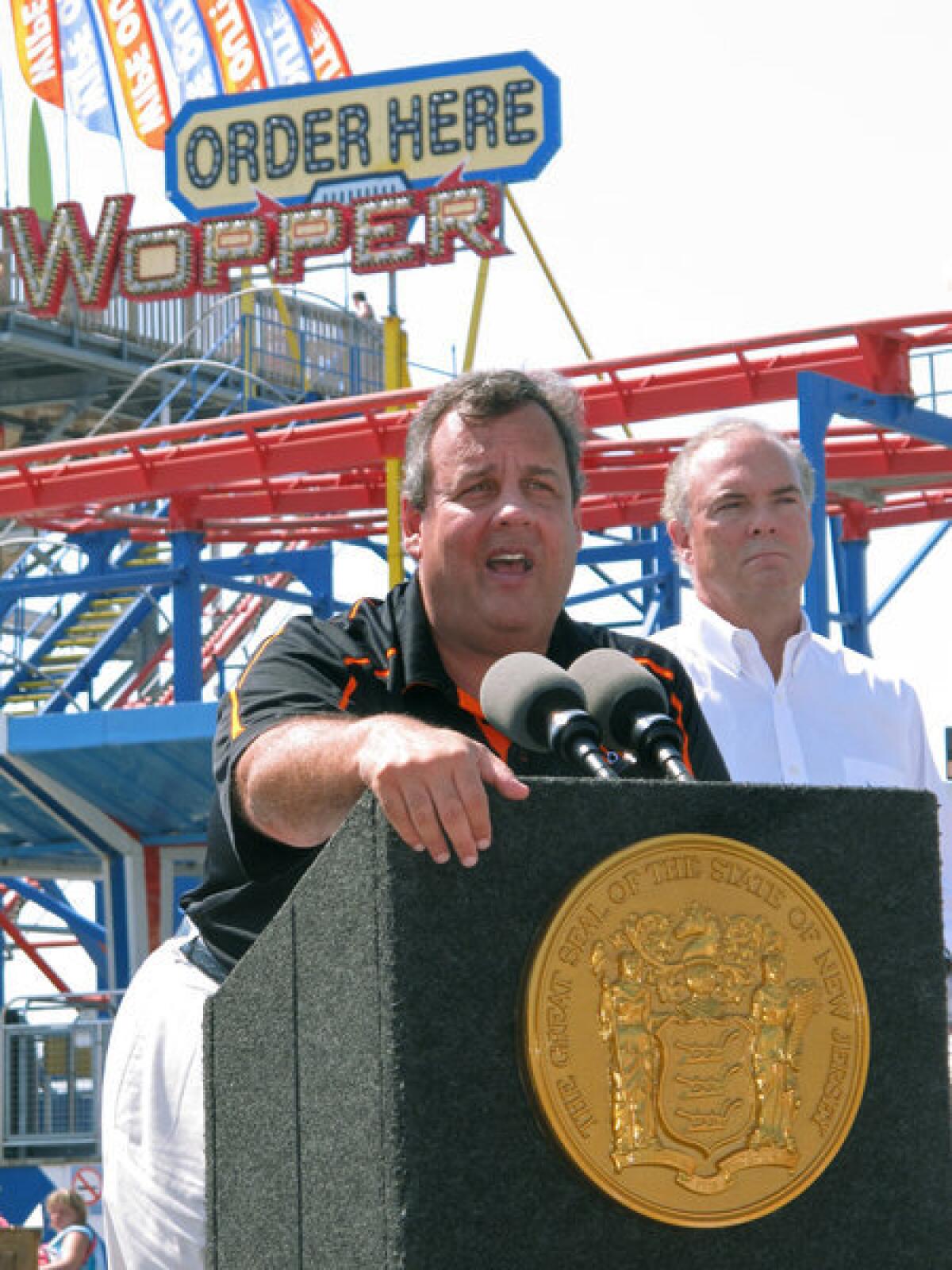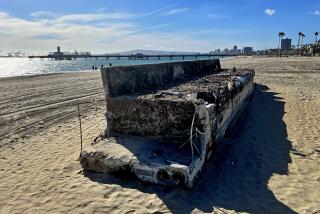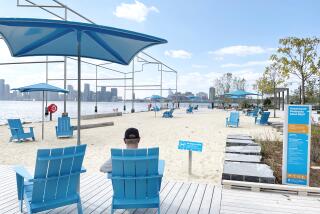Christie touts post-Sandy recovery, but Jersey shore tourism drops

Most Americans know Seaside Heights as the town made famous by Snooki and her ilk in MTV’s reality series “Jersey Shore.”
Mike Loundy simply knows the resort town as home. His grandfather came to Seaside Heights in 1932. The family never left, and Loundy’s two daughters, he proudly notes, are fourth-generation residents.
The town Loundy calls home was among the many devastated when Hurricane Sandy roared up the eastern seaboard last October. Rain, wind and surging tides tossed a roller coaster from Seaside Heights’ boardwalk into the Atlantic Ocean before pummeling homes and businesses.
“We took a direct hit,” said Loundy, who owns more than a dozen properties in town and runs a real estate brokerage. His office had “3 feet of muck” and his house was submerged in 5 feet of water, Loundy said. He was out of his home for more than two months.
But as the director of community improvements for the Borough of Seaside Heights, Loundy also witnessed the effort to rebuild: the boardwalk was fully restored; power and telephone poles were replaced; and the water and sewer lines were repaired.
“We feel we’ve done approximately two years’ worth of work in terms of rebuilding our infrastructure … in 10 months,” Loundy said.
There was good reason to rush. Tourism revenue accounts for 65% of Seaside Heights’ municipal budget, Loundy said. In New Jersey, tourism is a nearly $40-billion industry – and more than two-thirds of it stems from towns along the state’s 127 miles of beaches.
This Labor Day weekend marks the end of the first summer after Sandy devastated the Garden State’s coastal communities.
In what many dubbed a “shore tour,” Republican Gov. Chris Christie seized the opportunity last week to visit beach towns, where he touted recovery achievements since Sandy hit.
The governor spent considerable time deflecting criticism for a taxpayer-funded $25-million ad campaign that flooded local TV stations and featured Christie and his family promoting the state’s beaches with the slogan, “We’re stronger than the storm.”
Christie, who is up for reelection in November, dismissed such criticism and focused on the storm recovery effort.
“There’s still lots of people around this country … who didn’t believe we’d be ready for the summer,” Christie told a crowd in Sea Bright on Wednesday.
“The great news is – and I could tell this when I was flying up here today, we flew up the coastline – I’ve never seen the water in New Jersey look cleaner or better than it looks this summer,” Christie said Thursday in Point Pleasant. “And it’s just great to see.”
But the governor’s rhetoric wasn’t all triumphant: Thousands are still not back in their homes, Christie said. He blamed federal agencies, saying he’s “incredibly frustrated” by the National Flood Insurance Program. He called the Small Business Administration “a disaster” worthy of intervention by the Federal Emergency Management Agency.
The delays in recovery translate to hard times for local businesses and lower revenues for state and local coffers.
With communities still recovering, tourism revenues are down by as much as 40%, Christie said, citing anecdotal evidence from business owners and residents.
Loundy’s experience aligns with Christie’s figures. Rentals are off by 30% to 40%, and home sales are down by an even wider margin, Loundy said.
Beach tags – the daily or seasonal passes purchased for beach access – are another indicator of the tourism industry’s health. The Asbury Park Press reported that beaches in central and northern New Jersey – which bore more of Sandy’s brunt than South Jersey shores – are seeing declines averaging 16%.
Some beach communities are seeing a decrease of of more than 80% in beach tag sales.
To be fair, rainfall might have kept tourism figures down regardless of Sandy’s aftermath. June was the wettest ever for the state, and July also saw above-average rainfall, according to figures from the New Jersey state climatologist.
And just as Sandy spared some towns while wreaking havoc in others, some New Jersey beach towns are seeing record numbers of visitors. Long Branch, about 30 miles north of Seaside Heights, is on track for one of its best summers, Christie said.
Loundy said he hopes Seaside Heights’ recovery stays on track, including the rebuilding of the shore dunes and reconstruction of the beach by the Army Corps of Engineers. And although he called this summer’s sluggish business difficult, he’s optimistic.
“It’s not about what we’re off,” Loundy said. “It’s about what we’re able to get.”
ALSO:
Driving is down, and it’s not just the economy, study finds
New Jersey court: Texting with a driver can get you in trouble too
Slain WWII vet Delbert ‘Shorty’ Belton buried with military honors
Twitter: @MattHjourno
More to Read
Start your day right
Sign up for Essential California for news, features and recommendations from the L.A. Times and beyond in your inbox six days a week.
You may occasionally receive promotional content from the Los Angeles Times.







